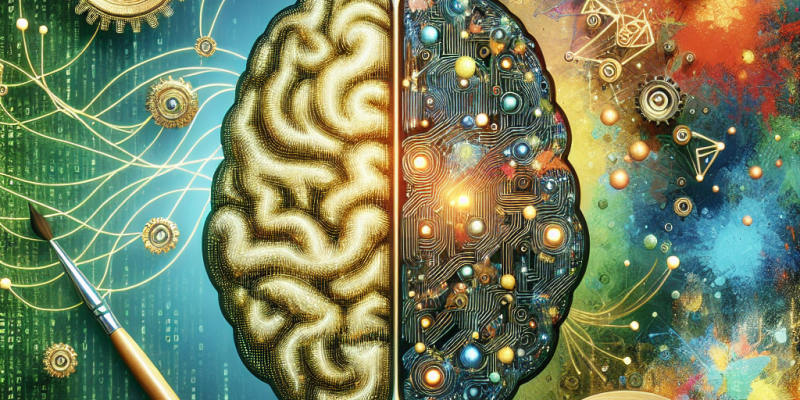Beyond the Algorithm: How Generative AI Meets Human Creativity

Beyond the Algorithm: How Generative AI Meets Human Creativity
In recent years, generative AI has emerged as a groundbreaking force across various creative fields, promising to reshape how we think about art, music, writing, and design. While it is easy to perceive artificial intelligence as a soulless machine generating content through algorithms, a deeper examination reveals a collaborative relationship between technology and human creativity. This article explores how generative AI not only complements but also enhances human creativity, paving the way for a new era of artistic expression.
The Rise of Generative AI
Generative AI refers to algorithms that create new content by learning from existing data. From text generation like OpenAI’s GPT-3 to image creation seen in tools like DALL-E, these systems analyze vast datasets to produce original works that often mimic human style and intent. This technology leverages deep learning, a subset of machine learning, to understand patterns and nuances, making it capable of producing work that is strikingly complex and sometimes indistinguishable from human creation.
The implications of this rise extend beyond efficiency. It challenges our traditional notions of creativity—what does it mean to create? Is originality a requirement for creativity? As generative AI effectively blurs these lines, artists and creators are finding new ways to collaborate with these algorithms rather than seeing them as competition.
Collaboration, Not Competition
One of the most exciting developments in generative AI is its role as a creative partner. Artists across disciplines are beginning to utilize AI tools to inspire and evolve their own work. For instance, musicians might employ AI to generate loops or melodies, which they can then build upon, adding their own unique style and emotion. Visual artists are using AI to produce color palettes or concepts that spark new directions for their projects.
This collaborative approach allows for a more iterative process. Creators can experiment with numerous variations, enhancing their work’s depth and texture while pushing the boundaries of their individual creativity. AI becomes a tool for exploration, offering fresh concepts that human creators can refine, interpret, and personalize.
Raising Ethical Questions
As generative AI becomes increasingly integrated into creative processes, it raises important ethical questions. Who owns the work created in collaboration with AI? What happens to traditional art forms? Concerns about authenticity and originality are prevalent. While the technology can produce seemingly original works, the underlying training data—often composed of existing human creations—poses questions about intellectual property and the definition of creativity itself.
Furthermore, there is the risk of creators becoming overly reliant on AI, leading to a homogenization of artistic expression. It is vital for artists and creators to maintain their unique voices and perspectives, using AI as a means to enhance rather than replace their creativity.
The Future of Creativity
As we look ahead, the integration of generative AI in creative fields is likely to deepen. Artists and technologists are forging hybrid paths—curriculums that blend coding with painting, or workshops that merge storytelling with machine learning. Educational institutions are beginning to teach students how to work with AI, marrying technical skills with artistic sensibilities to produce a new generation of creatives who can harness this technology intuitively.
Moreover, as AI becomes more capable of creating human-like works, the need for human intuition—empathy, context, and cultural relevance—remains paramount. While AI can analyze data and generate trends, it lacks the lived experience and emotional grasp that human artists bring to their craft. Thus, the true power of generative AI lies in its ability to amplify human creativity, not to overshadow it.
Conclusion
The intersection of generative AI and human creativity presents a unique opportunity to redefine artistic processes and results. As we move beyond traditional notions of creation, embracing collaboration with AI could lead to a renaissance of innovation and expression. By honoring the nuances of human experience and emotion, while leveraging the analytical prowess of AI, creators can venture into uncharted territories. Ultimately, the conversation about AI in the creative domain should not revolve around rivalry but rather collaboration—a partnership that respects the essence of human creativity while exploring the limitless possibilities brought forth by technology.














